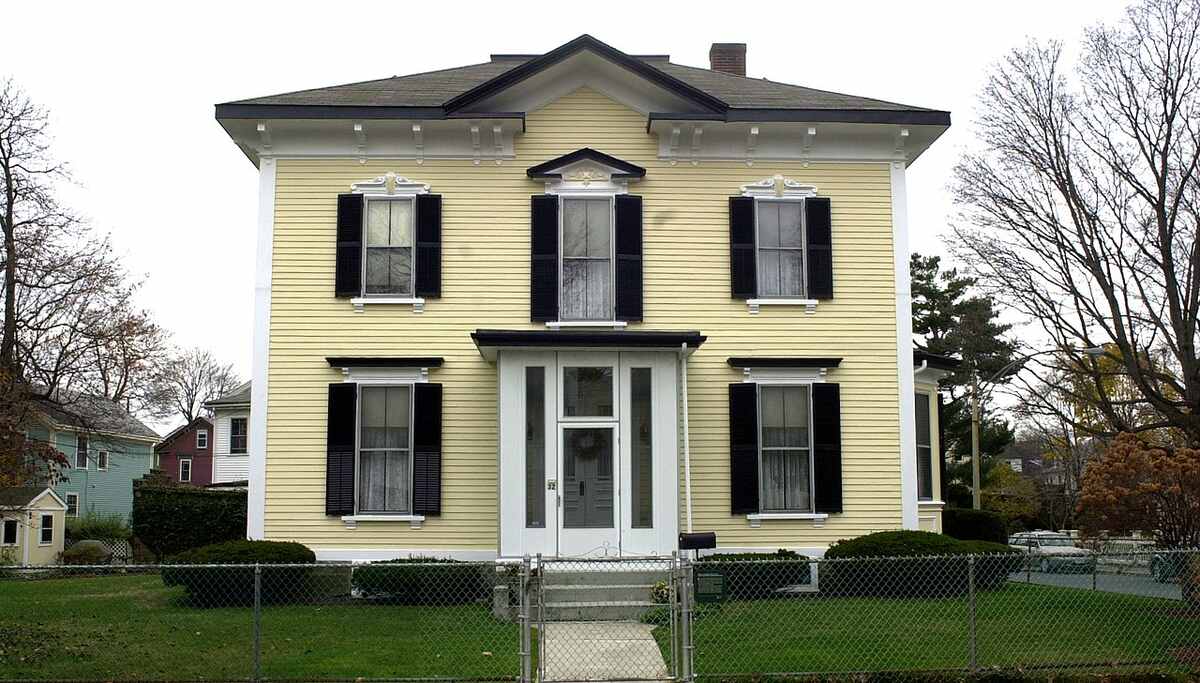
If you’re looking to grow a gorgeous lawn that provides serious curb appeal to your Boston home, you’re in luck. Despite our unpredictable weather and somewhat challenging conditions, it’s not tough to grow a lush, green lawn. To help you select the grass that is most appropriate for your lawn care goals and growing conditions, we’ve got the dirt on the five best grass types for Boston.
Kentucky Bluegrass
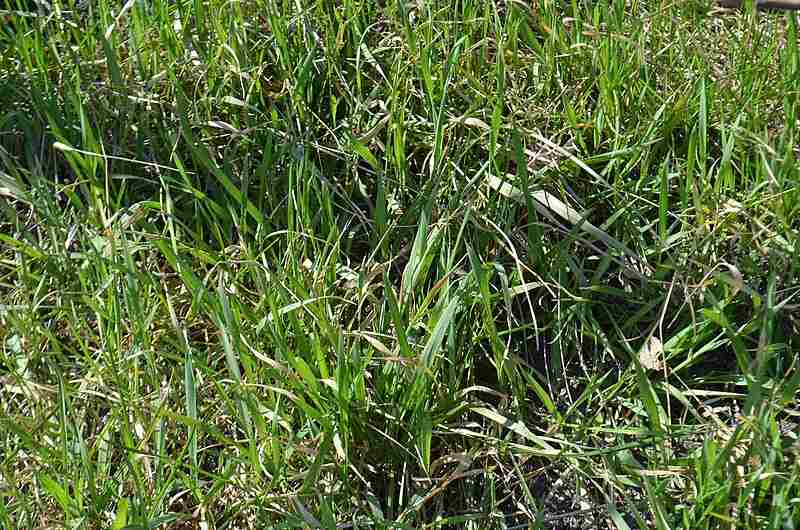
Photo Credit: Ethan2039 / Wikimedia Commons / CC BY-SA 4.0
Kentucky Bluegrass is one of the best grasses for New England, as it flourishes in colder climates. It has light-to-dark green blades that grow strong and sturdy throughout the year’s unpredictable weather. It requires regular maintenance including periodic fertilizing and frequent watering.
Kentucky Bluegrass is often mixed with other cool season grasses like tall fescue to enhance the ability of the turfgrass stand to recover from stresses.
- Classification: Cool-season
- Spreads by: Rhizomes
- Shade tolerance: Moderate; prefers full sun
- Drought tolerance: Moderate
- Foot traffic tolerance: High
- Maintenance needs: High
- Mowing height: 2.5-3.5 inches
- Potential for disease: Moderate to high
Grass Seed Options:
– Jonathan Green (11970) Blue Panther Kentucky Bluegrass Grass Seed (3 lbs.)
– SeedRanch Midnight Kentucky Bluegrass Seed (5 lbs.)
– Jacklin Seed – Biltmore Blue Blend – 100% Kentucky Bluegrass (5 lbs.)
Perennial Ryegrass
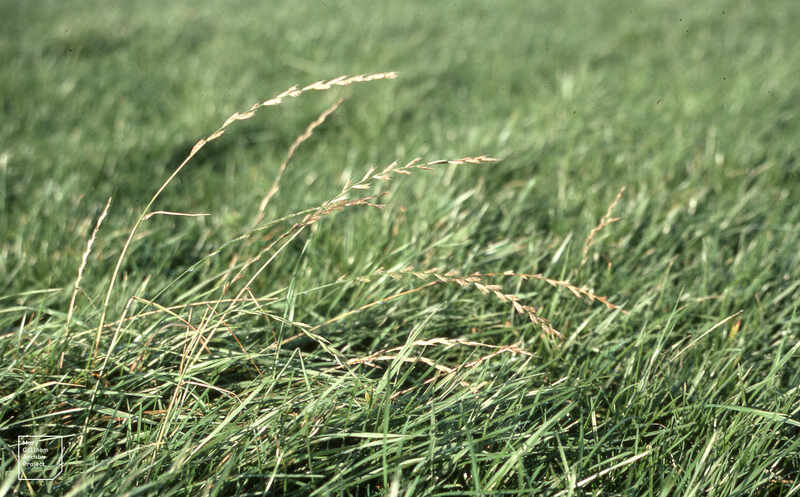
Photo Credit: Dr Mary Gillham Archive Project / Flickr / CC BY 2.0
This grass type performs well in a mild year-round climate and can handle cold winters with minimal damage. It prefers sunlight with some shade and grows exceptionally well when mixed with Kentucky Bluegrass. This combination holds up nicely to harsh conditions and heavy foot traffic.
Perennial ryegrass does not hold up well to sweltering summer conditions, but when mixed with other slow-growing Kentucky bluegrass, it can be a good option to hold down the fort until the slower plants take hold.
- Classification: Cool-season
- Spreads by: Bunch-type grass
- Shade tolerance: Low, prefers full sun
- Drought tolerance: Low, goes dormant in summer
- Foot traffic tolerance: High
- Maintenance needs: Low, needs frequent cutting
- Mowing height: 1.5-2.5 inches
- Potential for disease: High
Grass Seed Options:
– Outsidepride Perennial Ryegrass Seed (5 lbs.)
– Eretz ProTurf Perennial Ryegrass Fine Lawn Seed (choose your size)
Fine-Leaf Fescue
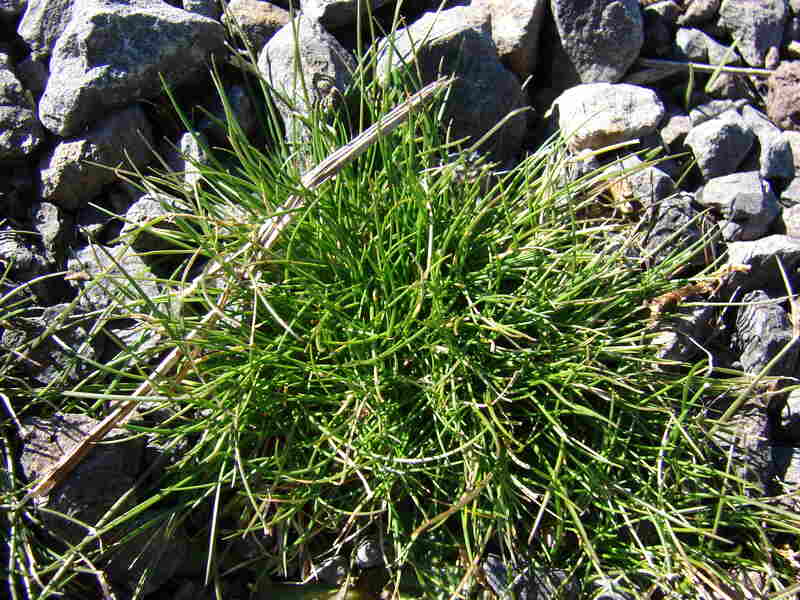
Photo Credit: Forest and Kim Starr / Flickr / CC BY 2.0
This grass type performs well with low maintenance and is an excellent choice for homeowners seeking a lawn that is easy to cultivate. Fine-leaf fescue grows well on a dry, shady lawn, and is not recommended for areas of high traffic as it can be damaged and compressed easily. It’s often used as the “shade” component in cool-season sun-shade mixes.
There are several types of fine-leaf fescue available, including chewings fescue, red fescue, and hard fescue. All fine-leaf fescues offer solid resistance to frigid temperatures.
- Classification: Cool-season
- Spreads by: Bunch-type grass with the exception of creeping red fescues, which have rhizomes
- Shade tolerance: Moderate to high; prefers at least four hours of sunlight per day
- Drought tolerance: High
- Foot traffic tolerance: Low
- Maintenance needs: Low
- Mowing height: 2.5-3 inches
- Potential for disease: Moderate; chance of developing diseases like red thread and snow mold
Grass Seed Options:
– Outsidepride Legacy Fine Fescue Grass Seed (5 lbs.)
– Eretz Creeping Red Fine Fescue Seed (choose your size)
– Outsidepride Creeping Red Fine Fescue Grass Seed (25 lbs.)
– Outsidepride Hard Fine Fescue Grass Seed (10 lbs.)
Tall Fescue

Tall Fescue requires a bit more care than fine-leaf fescue but is a popular turfgrass for homes in Boston. It does not need excessive fertilizer or water and is not as prone to diseases as other higher-maintenance cool-season grasses. It’s more coarse than Kentucky bluegrass, yet not as wide-bladed as other varieties. It is a bunch-type grass and has a vibrant green color.
Tall Fescue tends to be more drought resistant than other grasses, mainly because its roots penetrate deep into the soil. It is disease-resistant and wear-tolerant.
- Classification: Cool-season
- Spreads by: Bunch-type grass
- Shade tolerance: Moderate; prefers direct sunlight
- Drought tolerance: Moderate
- Foot traffic tolerance: Moderate
- Maintenance needs: Fast rate of growth; prepare to mow often
- Mowing height: 3-4 inches
- Potential for disease: Low
Grass Seed Options:
– Triple-Play Tall Fescue Grass Seed Blend (5000 sq ft)
– Eretz Kentucky 31 K31 Tall Fescue Grass Seed (choose your size)
– Pennington The Rebels Tall Fescue Grass Seed Mix (7 lb.)
Creeping Bentgrass
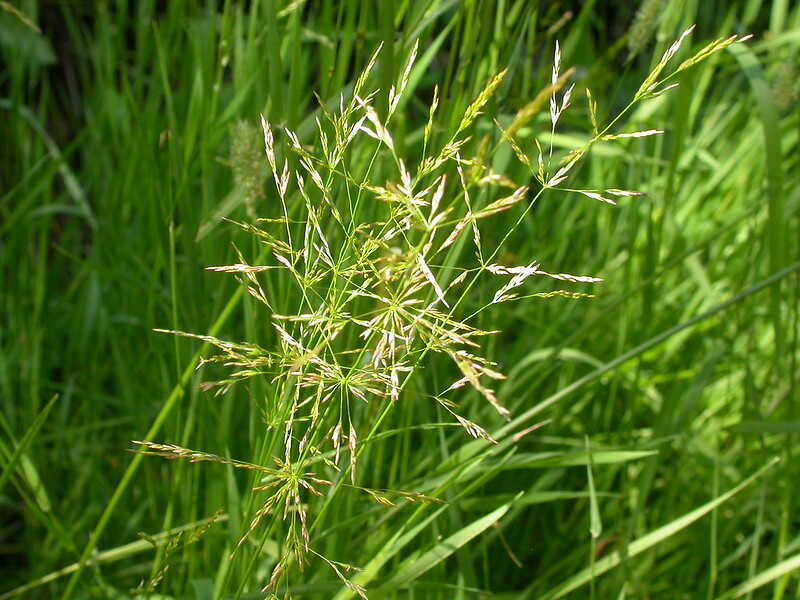
Also known simply as bentgrass, creeping bentgrass is a specialty grass, and the grass of choice for putting greens, bowling greens, and croquet courts. It’s not much of a lawn grass, but it’s ideal if you want to grow a putting green on your lawn (and own a reel mower to keep it cut ultra short).
Creeping bentgrass has a dense, matted down appearance. Its blades have smooth upper surfaces and rigid lower surfaces. Creeping bentgrass thrives in cooler temperatures and is, therefore, a popular choice among New England homeowners who want to use a specialty grass on a small portion of the lawn.
- Classification: Cool-season
- Spreads by: Stolons
- Shade Tolerance: Low
- Drought tolerance: Low
- Foot traffic tolerance: Low
- Maintenance needs: Very high
- Mowing Height: 0.25 to 0.75 inches
- Potential for disease: High
How to Choose the Best Grass for Your Boston Yard
There are many types of grass to choose from, but asking yourself various questions will help narrow down your search:
If you want to save time, perennial ryegrass and fescues require little maintenance, and are your best choices.
In many cases, cool-season mixes have the largest number of advantages. Since you have two or three grasses, if one gets a disease, it won’t take out your whole lawn. Each one has different strengths, which help compensate for the weaknesses of the others.
Fine-leaf fescues are the best options for lawns with lots of shade. For lawns with full sun, Kentucky bluegrass, perennial ryegrass, and tall fescues are the best choices.
Opt for grass that can withstand high amounts of foot traffic, like Kentucky bluegrass and perennial ryegrass.
Fine-leaf fescues don’t require as much watering as other grasses.
More Boston, MA Resources
Call a Mower in Boston
If you don’t have time to take care of your lawn, call a Boston lawn care pro to give your lawn a good grass-kicking.
LawnStarter participates in the Amazon Services LLC Associates Program, an affiliate advertising program. LawnStarter earns revenue from products promoted in this article.
Main Image Credit: Jameslwoodward / Wikimedia Commons / CC BY-SA 3.0